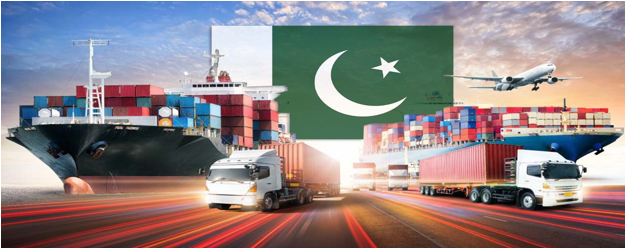INP-WealthPk
Ayesha Saba
Experts argue that while the government has introduced export promotion policies, inconsistent implementation limits their effectiveness. They emphasise the need for stronger public-private collaboration and better integration with global trade trends for translating these policies into sustainable economic growth.

During an interview with WealthPK, Abdul Khaliq, Trade Adviser at the Ministry of Commerce, said: “Pakistan’s export base remains narrow, with limited diversification into value-added goods. This makes it difficult to offset the impact of rising import bills, particularly in sectors where local substitutes are either unavailable or uncompetitive.”
He further highlighted that existing Free Trade Agreements (FTAs) and Preferential Trade Agreements (PTAs) with key partners like China, ASEAN countries, and the European Union offer opportunities for expansion but require renegotiation to ensure Pakistan gains maximum benefit. “It’s not just about signing agreements; it’s about negotiating terms that genuinely support our export sectors and encourage foreign investment,” he noted.
He suggested that Pakistan must engage more proactively with international trade bodies to secure favourable trade agreements. “By leveraging its strategic location and participating in global trade forums, Pakistan could open new markets for its goods and reduce tariff barriers.” “Currently, Pakistan’s exports are mainly focused on a few sectors, particularly textiles, which account for over 60% of total exports. This over-reliance makes the economy vulnerable to global price fluctuations and demand shifts,” he said.
To counter this, he recommended developing sectors like information technology, pharmaceuticals, and engineering goods, which offer higher value addition and have growing demand in global markets. Talking to WealthPK, an official from the Trade Development Authority of Pakistan (TDAP) said on condition of anonymity that high energy costs, inconsistent government policies, and logistical challenges continue to hinder export potential.
“Reducing the cost of doing business is essential,” he said. “Without lowering energy tariffs and improving infrastructure, Pakistani exporters will struggle to compete with regional counterparts like Bangladesh and Vietnam.” “We need to move beyond traditional markets and low-margin goods. Encouraging entrepreneurship and rewarding innovation within small and medium enterprises can lead to a more resilient export sector,” he stressed.
While the government has introduced various export promotion policies, the TDAP official argued that their implementation remains inconsistent. “Stronger collaboration between public and private sectors is essential to ensure that policies translate into tangible benefits. By aligning national trade strategies with global trends and strengthening institutional frameworks, Pakistan can gradually shift towards a more sustainable trade model.”
Pakistan’s trade deficit widened by 18% year-on-year (YoY) in January 2025, reaching $2.3 billion, up from $1.96 billion in the same month of the previous year, according to the data released by the Pakistan Bureau of Statistics. Exports for January 2025 saw a modest increase of 4.6%, totalling $2.92 billion, compared to $2.792 billion in January 2024. In contrast, imports grew by 10%, rising to $5.233 billion from $4.756 billion in the same month of the previous fiscal year.
On a month-to-month basis, the trade deficit showed a slight improvement, decreasing by 5.5% compared to December 2024, when it stood at $2.447 billion. Exports in January 2025 were slightly higher than the $2.911 billion recorded in December 2024. Imports, however, declined 2.3%, dropping from $5.358 billion in December to $5.233 billion in January.
Credit: INP-WealthPk




